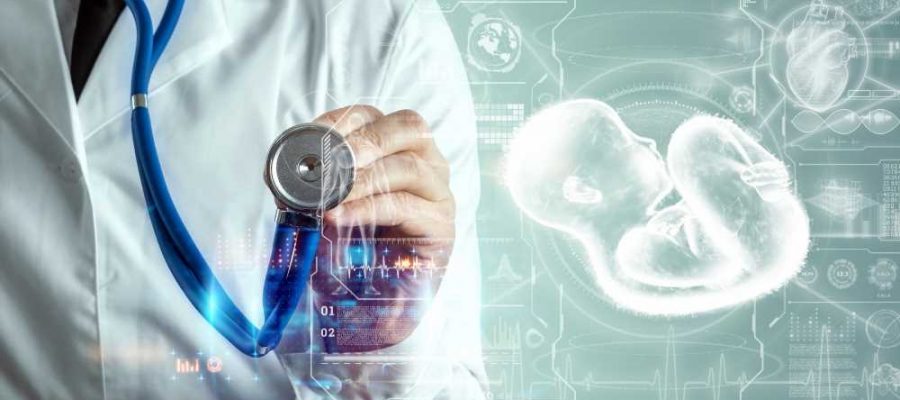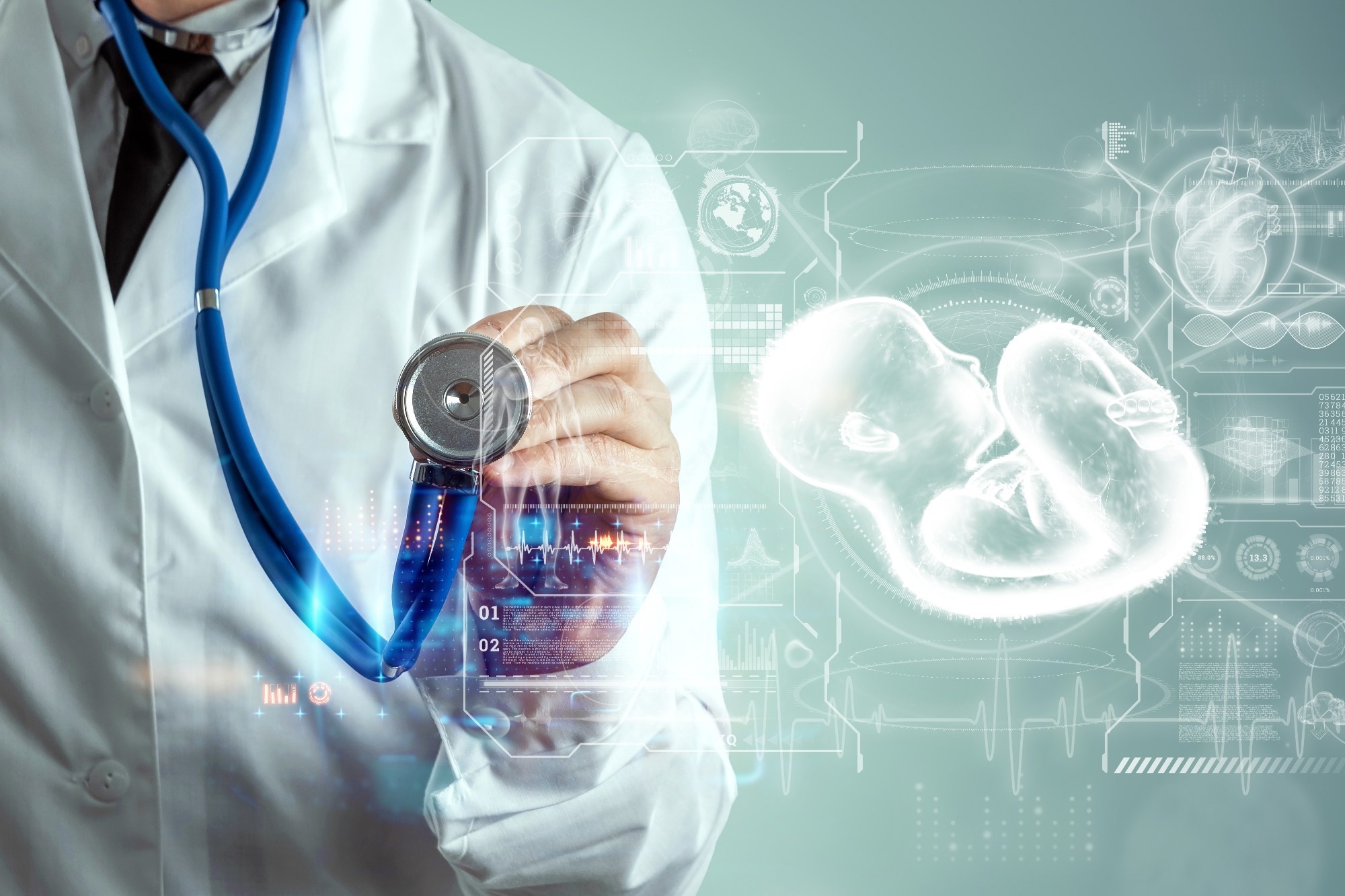
The Pros and Cons of Artificial Wombs
Artificial womb technology (AWT) sparked a media sensation back in 2017 and, since then, has drawn much debate. Key questions include: Is the artificial womb inhabitant a fetus? What status does it have? And what are the pro and cons of this new technology?

The world's first artificial womb
In 2017 researchers at the Philadelphia Children's Hospital, Pennsylvania, revealed life had been successfully sustained inside an artificial womb or 'bio bag.' The team demonstrated how lamb fetuses had undergone a successful gestation period inside the artificial womb. These had developed without the typical complications associated with premature birth and were otherwise healthy.
The fetuses had been transferred from the maternal womb and had undergone partial ectogenesis prior to this transfer. It is not the first time such a feat has been attempted via animal experimentation. In the 1990s, a lab in Tokyo had undertaken similar experiments that failed.
Premature birth is the leading cause of death among newborn babies globally. Presently, premature neonates born before 22 weeks have no hope of survival. While there has been no real change on this front for some time, artificial womb technology is anticipated to change the outlook of neonatal intensive care.
The concept of artificial womb technology
Artificial womb technology mimics the womb's internal environment by providing laboratory-made amniotic fluid and oxygenation via an oxygenator connected to the fetal umbilical cord.
The technology works by simulating uterine environmental conditions akin to if the neonate had never been born. This contrasts with the artificial conditions utilized to sustain life under intensive care. Artificial womb technology is designed to replace the natural function of the maternal womb rather than facilitate a newborn rescue.
The idea of artificial womb technology inevitably draws ethical debate regarding the benefits and harms to the fetus, parents, and society. Additional legal implications over the status of the fetus and associated discussion about the appropriate terminology to be used also come into question. One proposal for describing the product inside an artificial womb (i.e., to distinguish this from the natural fetus or neonate) is 'gestateling.'
The pros and cons of artificial womb technology
The prospect of utilizing artificial womb technology for a fetus aged 22–25 weeks is very real. Indeed, artificial wombs are already in development. One benefit of this is the hope that the artificial womb may reduce the risks of morbidity and mortality.
In addition, artificial womb technology could benefit maternal health and spare parents the distress of seeing their premature infant hooked up to a ventilator in intensive care. A downside would be the mother having to undergo a Caesarean section.
Moving away from the pros and cons for the fetus or 'gestateling' and the parents and looking at how the technology might affect society at large, benefits can be envisaged in terms of cost savings in reducing comorbidities in neonates.
However, artificial womb technology could increase the need for intensive care for infants who would not otherwise have survived without this intervention. Another point on the plus side for artificial womb technology is the advantage of a clearer understanding of fetal physiology and development. Indeed, this technology looks set to increase our capacity for visualizing gestation.
A distinction must be made between partial ectogenesis for medical management of neonates needing intensive care and thus medical management, and non-medical reasons (such as avoiding pregnancy). This notion is not feasible at present (though the IVF fetus is viable from weeks 0-4 and is not inconceivable) but has nonetheless drawn much interest.
The notion of complete ectogenesis remains, at present, an abstract concept. Yet the very idea of it has drawn the interest of the world media and captured the minds of the public.
We see sensational news headlines and article titles on websites such as: "Artificial wombs: the coming era of motherless births" (Genetic Literature Project), "World's first artificial womb facility is a creepy glimpse of pregnancy in future, see what it is" (Economic Times) and "That Artificial Womb Video Isn't Real, But Scientists Say It Could Be" (HuffingtonPost).
However, at present, the idea of complete ectogenesis is "nothing more than a technically and developmentally naïve, yet sensationally speculative, pipe dream" (De Bie et al., 2022).
This does not stop us from speculating on the potential pros and cons of artificial womb technology in connection with complete ectogenesis. The concept has been catapulted into the heart of the debate over abortion. Artificial womb technology offers up the potential to be an alternative to abortion, and this benefit is not lost on pro-choice advocates.
Some feminists have pointed out the inherent dangers of this fact. The debate is complex, and others have pointed out the potential of this futuristic technology for liberating women and enhancing gender equality.
In the workplace, realizing artificial womb technology could enable parenthood without the usual need for a leave of absence for a pregnancy. Others have raised concerns over the potential for the devaluation of pregnancy and the associated risks of losing female empowerment.
Another group drawn to the debate on artificial wombs are transhumanists who see technology as a means for improving human quality of life.
The prospect of artificial wombs for humans does not seem far away. However, beyond the hype there are many pros and cons to consider, in addition to a host of legal and ethical implications.
References
- De Bie FR, et al. (2022). Ethics Considerations Regarding Artificial Womb Technology for the Fetonate. The American Journal of Bioethics. doi: 10.1080/15265161.2022.2048738. https://www.tandfonline.com/doi/full/10.1080/15265161.2022.2048738
- Economic Times (2022). "World's first artificial womb facility is a creepy glimpse of pregnancy in future, see what it is." Online: https://economictimes.indiatimes.com/news/international/us/worlds-first-artificial-womb-facility-is-a-creepy-glimpse-of-pregnancy-in-future/articleshow/96203552.cms?from=mdr
- Jones L (2019). The Abortion Debate Is Stuck. Are Artificial Wombs the Answer? New York Times. Online: https://www.nytimes.com/2019/08/03/opinion/sunday/abortion-technology-debate.html
- Khazan O (2017). Babies Floating in Fluid-Filled Bags. The Atlantic. Online: https://www.theatlantic.com/health/archive/2017/04/preemies-floating-in-fluid-filled-bags/524181/
- Moss R (2022). That Artificial Womb Video Isn't Real, But Scientists Say It Could Be. Huffingtonpost. Online: https://www.huffingtonpost.co.uk/entry/is-ectolife-artificial-womb-real_uk_639858a2e4b0c28146469016
- Romanis EC (2018). Artificial womb technology and the frontiers of human reproduction: conceptual differences and potential implications. Journal of Medical Ethics. Online: https://jme.bmj.com/content/44/11/751
- Warmflash D (2022). Artificial wombs: The coming era of motherless births? Genetic Literacy Project. Online: https://geneticliteracyproject.org/2022/04/22/artificial-wombs-the-coming-era-of-motherless-births/#
Further Reading
- All Pregnancy Content
- Early Signs of Pregnancy
- Is it Safe to Exercise During Pregnancy?
- Pregnancy: 0-8 weeks
- Pregnancy: 9 – 12 weeks
Last Updated: Aug 10, 2023

Written by
Dr. Nicola Williams
Versatile science writer and content specialist (who can offer a unique historical twist too). I broadly focus on biology (including medicine), physics, and technology. I’m passionate about communicating the latest scientific research in an exciting, fresh, and accessible way. As a trained historian, I am also uniquely able to write content with a historical focus. I write about scientific news and research in a variety of formats, including articles, blogs, and scripts.